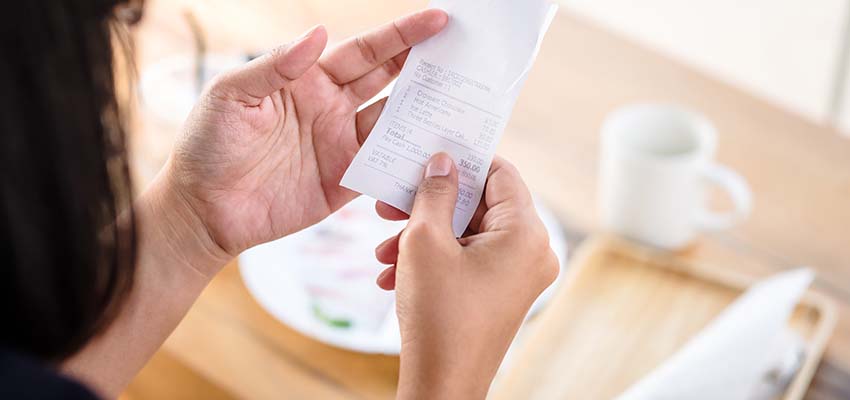Menu price increases require a strategic approach

Figuring out when and how to raise menu prices is one of the hardest decisions when running a restaurant, and it’s especially true now with increased costs on food and labor hitting everyone’s bottom lines.
Inflation, supply chain shortages, and the industry’s current labor woes are some of the issues affecting restaurants’ bottom lines, and in most cases, they’re adjusting prices.
Others add small surcharges onto customers’ bills to meet increased expenses. According to the Association’s most recent survey on business conditions, 91% of operators surveyed raised menu prices; 16% report adding surcharges to checks.
Some restaurants are adding surcharges to offset increased operation costs; some are combatting rising credit-card transaction fees (swipe fees). Heartland Payment Systems explains that surcharges typically only apply to customers paying with credit cards, not those using debit, prepaid, or gift cards.
Surcharges set up to cover credit card transaction fees can’t exceed 4% of the sale price, must be applied across all card brands, and have to be labeled surcharges on the receipts. They also must apply to U.S. transactions only, in states where they’re permitted.
According to Heartland, many processors charge merchants different rates and it’s important for the merchants to understand the fee structure. Any and all participants in the program have to abide by the stated rules including how they notify customers.
Currently, transaction fee surcharges are legal in 44 states. Six states don’t allow them: Colorado, Connecticut, Kansas, Maine, Massachusetts, and Oklahoma.
Arbitrary menu price increases just won’t work
Craig Singleton, restaurant practice director for pricing strategist IRIS Pricing Solutions, says restaurants typically increase their menu prices in the spring and fall but now with inflation the highest it’s been in decades, they’re having to raise prices more often to maintain margins.
Singleton says a lot of operators are raising their prices, but not strategically or high enough to meet escalating expenses. Because those increases are haphazard and not enough to meet higher costs, operators will then quickly raise them again, which could alienate customers.
“The biggest risk in increasing prices arbitrarily is angering the guests,” he says. “They understand and are more used to higher prices now, especially over the last six months, but it’s important not to upset them too much. If your increases are reactionary, it will be a problem. Customers don’t have the same amount of money or appetite to spend. Given a reason, they might cut back on their visits.”
He also advises operators to leave prices of key drivers alone—iconic items like McDonald’s Big Macs and Starbucks espresso drinks. “They’re the most popular, making them the most sensitive items; they don’t have the same amount of elasticity other items do,” he says.
Singleton advises operators to increase menu prices rather than implement surcharges. “I think it’s better to just increase the plate price by a marginal amount.”
Pam Schwartz, co-founder and general manager of Ranch 45 in Solana Beach, Calif., says her business is struggling a bit, even though she’s already slightly increased prices.
“We’ve been managing the last two years, but when California raised the minimum wage this year, our labor costs went up,” she says.
“I’m looking at my P&L thinking labor is our biggest expense, and maybe I need to adjust my hours to accommodate it. I’ve raised our prices a bit, but I’m in this weird kind of conundrum where I just can't charge $25 for an entree at lunch. It doesn't sit right in my heart, and it doesn’t sit right with my community.”
Tips to raise your prices strategically
For restaurateurs looking at raising their prices, IRIS’s Singleton offers some strategic tips that may elicit less of a reaction from customers.
- Increase your prices incrementally more frequently. You could raise your prices 3% or 5% on perhaps a quarterly basis. If your food and labor costs rise rapidly, your can adjust prices sooner to maintain margins. Making price changes more frequently can condition consumers to accept them more readily.
- Know your competition. Understand who you compete against for customers. Do you value yourself properly, have you benchmarked your pricing properly? Are your prices comparable or are you leaving money on the table? Should yours be higher? Use competitive analysis to your advantage.
- Stay away from arbitrary price increases. Don’t use the “fireman approach”; going into a panic and increasing everything on the menu is just reactionary. Implement controlled, strategic increases.
- Leverage your technology. Use data analytics as well as transactional information from POS systems to help you understand buyer behavior better. It can pinpoint profit margins, frequency of purchase, the volume sold during different dayparts, and even the days on which sales were at their highest levels. That information could help you discover pricing opportunities and strategies to apply when increasing your prices.
This article is the last in a series exploring the challenges caused by inflation and what some industry operators are doing to sustain margins.
-
HeartlandHeartland provides entrepreneurs with software-driven technology to manage and grow their business. The company serves more than 400,000 merchants nationwide, delivering trusted solutions for payment, payroll and human resources, point of sale, customer engagement and lending. Heartland is a leading industry advocate of transparency, merchant rights and security. Heartland is a Global Payments Company (NYSE: GPN). Learn more at heartland.us.
